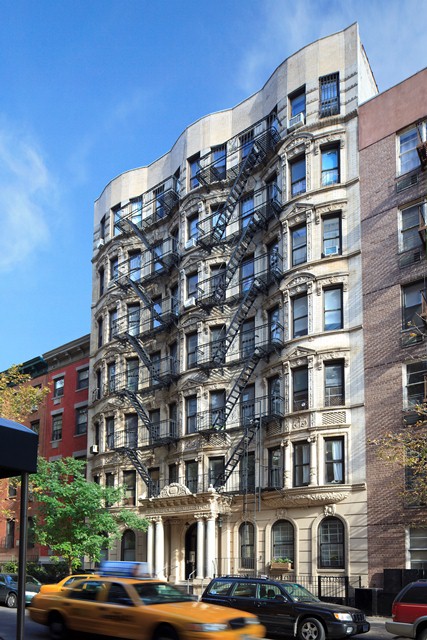Dermot Sells 14-Building Portfolio in NY for $191M
Dermot Property Associates has sold a 14-building portfolio in New York City consisting of 861 apartments and 41 retail units for $191 million.
By Gail Kalinoski, Contributing Editor
Dermot Property Associates has sold a 14-building portfolio in New York City consisting of 861 apartments and 41 retail units for $190.5 million, according to Cushman & Wakefield, which arranged the transaction.
The buildings, which were reportedly purchased by the Parkoff Organization of Great Neck, N.Y., are located in lower Manhattan, the Bronx and Astoria, Queens, all in close proximity to transportation, jobs, schools and recreation.
Dermot Property Associates, an affiliate of The Dermot Company Inc., a Manhattan-based developer, owner and manager of multi-family rental properties, acquired the properties in multiple transactions between 2003 and 2006.
“Dermot has assembled a very impressive portfolio of apartment buildings throughout New York City, which attracted substantial interest from private and institutional investors,” said Steve Kohn, president of Cushman & Wakefield Equity, Debt & Structured Finance.
A Cushman & Wakefield NY Capital Markets team led by Kohn, Helen Hwang, Mark Ehlinger, Nat Rockett, Karen Wiedenmann, Sujohn Sarkar and Sridhar Vankayala represented Dermot Property Associates.
The five Manhattan properties include 201 and 207 West 11th St. in the West Village between Waverly Place and the intersection of Seventh and Greenwich avenues. The two six-story buildings have a total of 67 residential units and five commercial spaces. 201 West 11th St. was built in 1920 and its neighboring building was constructed in 1900.
Two six-story buildings on Orchard Street between Broome and Grand streets on the Lower East Side are part of the Manhattan portfolio. The properties at 71 and 81 Orchard St. were built in 1907 and have a total of 60 residential units and seven commercial units.
The last Manhattan asset is at 229 East 12th St. between Second and Third avenues in the East Village. Built in 1920, the seven-story building has an elevator and 36 apartments.
Five properties are in the Pelham Parkway section of the Bronx. Two buildings, 2131 and 2132 Wallace Ave. are located at the southeast and southwest corner of Wallace and Lydig avenues. The six-story, elevator buildings constructed in 1929 have 344 residential units and 18 commercial units.
Three multi-family assets – all six-story, elevator buildings constructed in 1930 – are at 2146, 2162 and 2182 Barnes Ave. between Lydig Avenue and Pelham Parkway South.
The last four properties sold by Dermot Property Associates are in Astoria, Queens. Two four-story buildings are located across from each other on 38th Street – 21-80 and 21-81 38th St. They were built in 1927 and have a total of 73 apartments and 11 commercial spaces.
Two adjacent, four-story buildings at 23-05 and 23-15 30th Ave. complete the portfolio. Situated on the northeast corner of 30th Avenue and 23rd Street, they were built in 1927 and have 84 apartments.
While market research reports were not available for the outer boroughs of the Bronx and Queens, several CRE studies for the last half of 2012 note that sales of multi-family buildings in Manhattan had picked up and rents were expected to continue to rise. The Marcus & Millichap fourth quarter 2012 Apartment Research Market Report for Manhattan stated that average asking rents would finish 2012 at $3,730 per month, up 1 percent from 2011, and effective rents would increase 1.6 percent to $3,615. Marcus & Millichap noted that “sales activity for apartment buildings in Manhattan accelerated over the past year as greater access to financing and low interest rates drove demand. In that time frame, velocity surged 45 percent.”
The market report said that cap rates for trophy apartment buildings in Manhattan were near the pre-recession 3 percent mark while Class B buildings were “commanding first-year returns around 4.5 percent.”
The outlook for more multi-family investment in Manhattan this year is good, according to Marcus & Millichap.
“Owners with portfolios of mid-tier properties looking to exit the market may be able to attract buyers to these deals,” the report stated. “Indeed, with larger institutions controlling the high-end market, these investors could scale down to the Class B sector, where they can capture a 150-basis point spread over Class A cap rates.”








You must be logged in to post a comment.